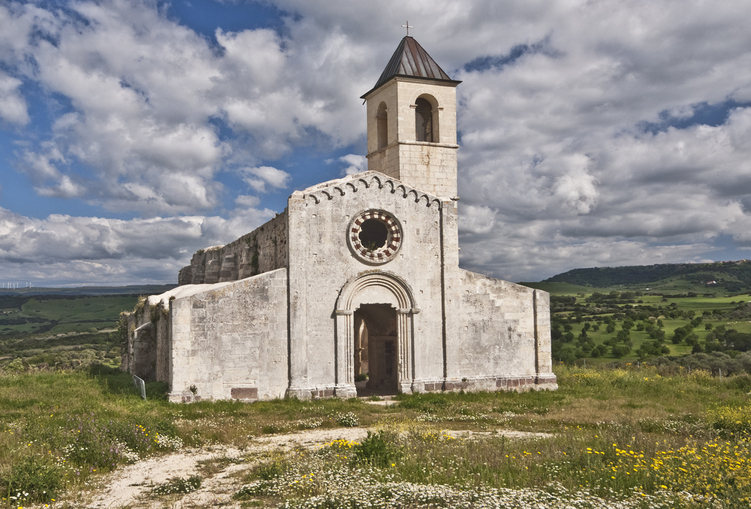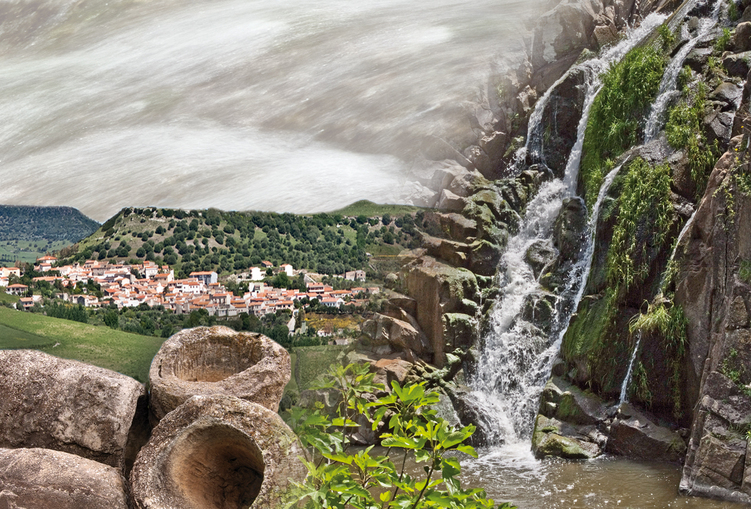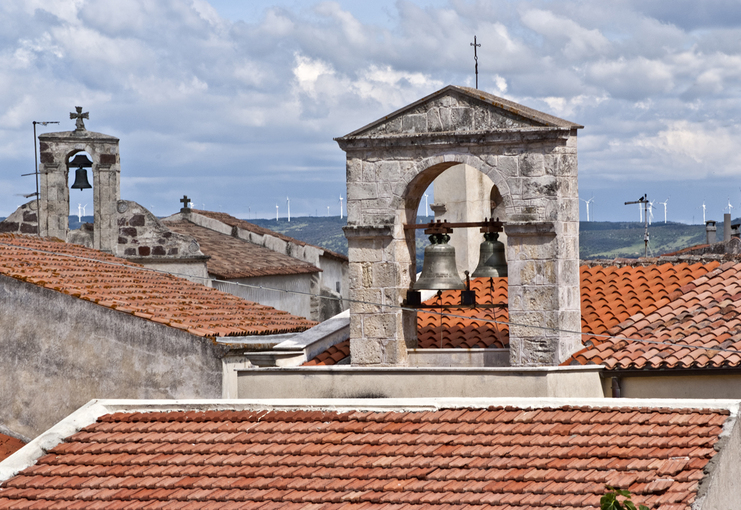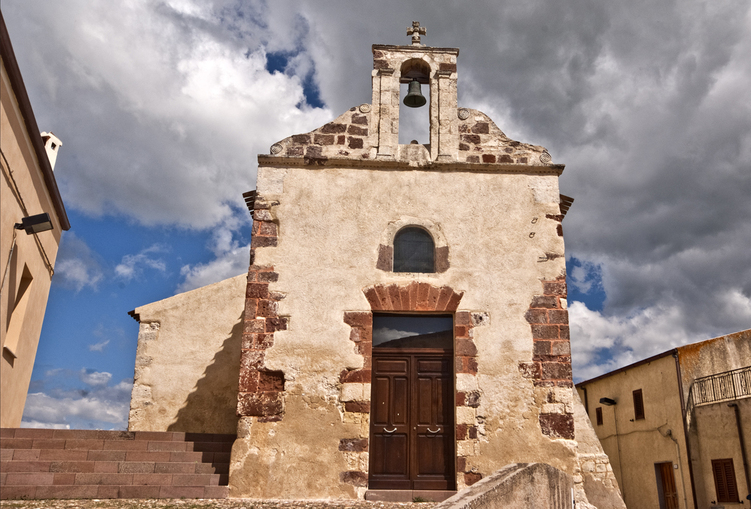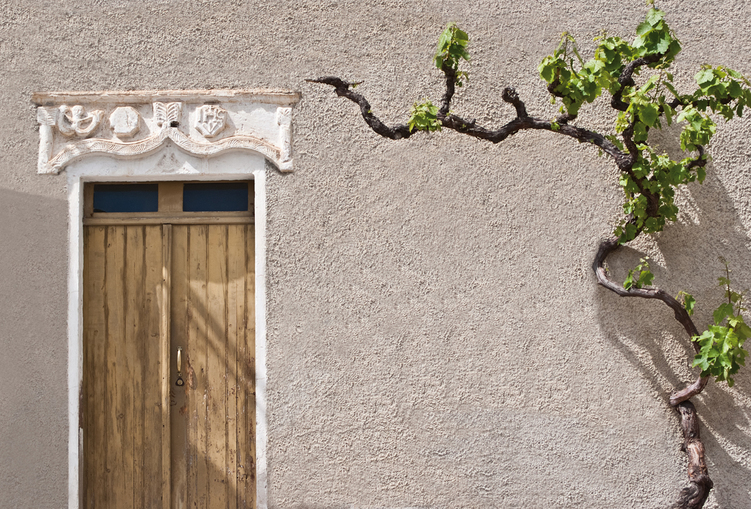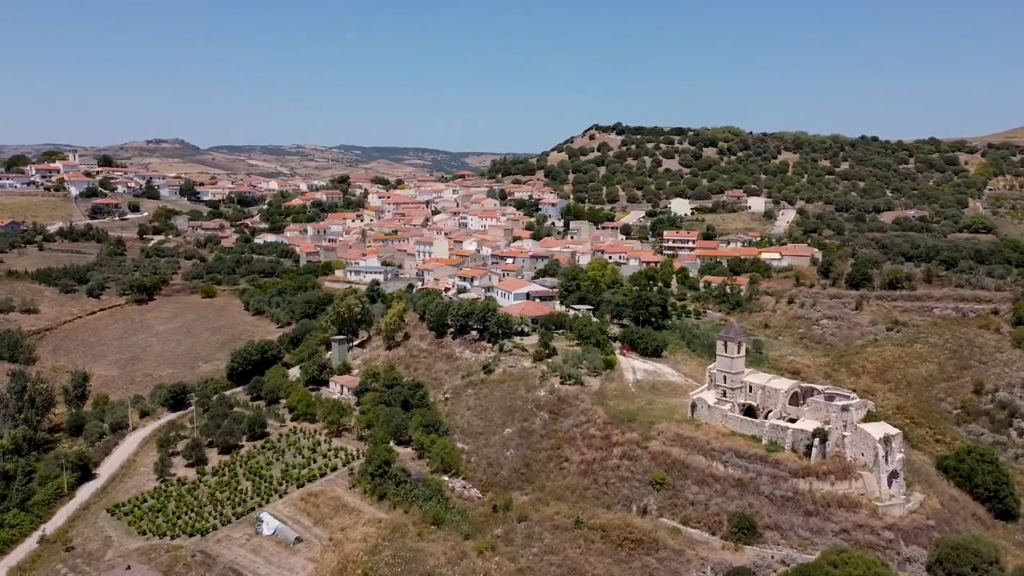
THE TEACHING OF TRADITION
Guarda 'l calor del sol che si fa vino, Giunto all'umor che dalla vite cola.
Canto XXV del Purgatorio Dante Alighieri (1265-1321)
Wine has always a deep attachment to his place of origin, and the cultural heritage and the history of Martis talks about lands naturally designated for viticulture.
Soils, with their predominantly limestone origin and the exposition to hot draughts coming from the sea, creating a microclimate suitable for the cultivation of vines, which have different varieties traditionally related to the territory, are favourable to the production of wines characterized by bodies and structure.
The vineyards, reared to guyot and spurred cordon, have a plant density lower than 5.000 plants per hectare, chosen to obtain limited productions, but of high quality.
THE VILLAGE - HISTORY AND CULTURE
A small jewel set in the middle of the Anglona, Martis covers an area of about 22 sq. km. and is built on an area of great geomorphological, environmental and historical importance. Its ancient origin, dating to the Miocene era and subsequent geological events, have sculpted a soft and gentle landscape, now marked by volcanic and sedimentary rocks that break up the wavy hills into evocative valleys and gorges. Among these gorges, that once were rich of impetuous rivers that eroded the sides, Today they flow along a course with a multiform aspect: winding summer rivers and rushing winter rivers, in which proceed, as in the case of the Rio Mastino which is wedged between steep cliffs of the gorge of Badde Traes, in a rapid waterfall with a crystal-clear sound in Triulintas. A landscape of considerable charm dotted, hear and there, by the colours of trachytic and the countless shades of the vegetation that covers sides and valleys surrounding the small lake at the foot of the waterfall. A mirror of light where the silence, scented by flowers, aromatic herbs and plants, is interrupted by the rhythmic sound of the water, the singing of the birds and the rustling of the leaves caressed by the wind. Images that lead to a remote past when large lakes and huge forests covered an area that extended to about 100km up to the Anglona boundary, including Martis and a lot of villages around it. But not everything disappears. Silent and imposing, petrified with the smallest detail, trees of that ancient forest still remain. Behold Carrucana: an extremely rare heritage, unique on the island itself, a petrified forest where the passages of time still echo.
The landscape changes to make it unmistakable to this corner of the Earth still unknown to most. Fragments of that ancient green mantle still cover a part of the territory revealing its natural richness. Oak woods alternate with Mediterranean scrub bushes and evergreen shrubs. almost brush strokes of colours where people can immerse themselves and savour the particular scents. Along the course of water, enriched by willows, tamarisk and poplar, various species of aquatic birds find their ideal habitat. Numerous small animals among which martens, weasels, foxes and rodents are very common, while, in the sky, it is not rare to see buzzards and majestic grey herons circling.
MARTIS, THE JEWEL OF ANGLONA
Martis: a meaningful name that evokes the splendor of a past whose mark lingers everywhere. Is not difficult to image long lines of roman soldiers and imposing knights to pass through the territory and to start building encampments, cities and temples in honour of their Gods. Among these, was certainly, as tradition assures us, a temple, now gone, built on top of a hill and dedicated to Mars, the Roman god of war. According to a legend the country was built by survivors of a war between two neighboring villages: Tathari, located on the Monte Franco, and the close one: Marte. Legend or fantasy, this territory was a backdrop to the passage and stay of numerous people since the Paleolithic era, as vouched by the various lithic finds and the presence of important historical and archaeological sites. From the prehistoric men’s chipped stones to the towering Nuraghi constructions, of which there are about 12, through roman camps to the Catalan – Aragon domination until the Genovese influence. The town exhibits masterpieces of Catalan art and mysterious symbols set into architraves and doors, and few of them allude to the presence of Templar Knights, which meaning has not been uncovered yet.
Even symbols and messages are present inside the seven churches built in the town, notably the one dedicated to San Pantaleo in the 14th century, in Romanesque and Gothic style. It was abandoned at the beginning of the 1900 due to subsiding of the hill where the church stands, and today is on its way to restoration. On the inside it is possible to observe the structural complexity which alludes to is former beauty, while is almost disappeared the valuable rose window that embellished the façade.
The beauty altar piece about the Miracle of San Pantaleo, dated 1595, that once was in the great chapel of the church, is the work of Andrea Lusso, the most important Sardinian mannerist painter, and today is exhibited in the new parish church. In the territory, among the numerous rural churches ruins, of some interest is the Romanesque church of San Leonardo, dated back to the 12th century.
In a place of such importance, the Museum of popular culture speaks about the culture of the land and the vineyards, in a region once rich and fertile and a busy center of communication.

